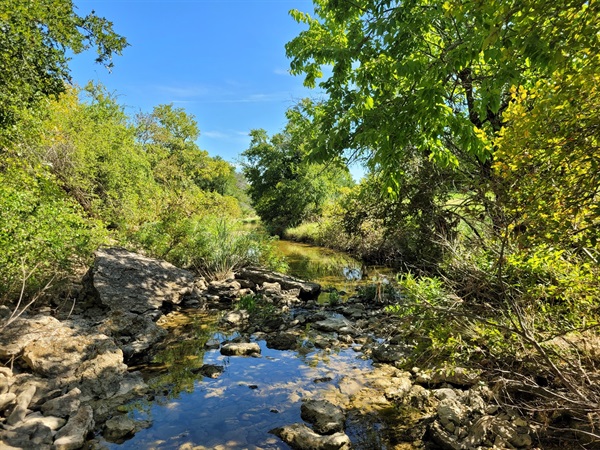Mowing
Parks and open space serve multiple purposes ranging from active recreation to flood mitigation. Active use areas such as soccer and baseball fields, dog parks, skate parks, playgrounds, and golf courses are maintained by frequent mowing. The Park & Recreation Department manages contractors to mow active use areas of parks.
Natural Areas are where Nature reigns.These areas allow for passive recreational activities such as trails, nature-viewing, and exploration. Natural Areas also provide ecosystem services such as slowing and detaining floodwater, wildlife habitat and connectivity, and filtering our drinking water and the air we breathe.

Litter Control
In an urban environment, litter on our streets and waterways present an ongoing challenge. Park staff and contractors pick up litter in parks weekly. Keep Fort Worth Beautiful, whose mission is to educate and engage Fort Worth residents and businesses to take responsibility for improving their community environment, organizes volunteer groups to pick up litter in parks and streams. Adjacent neighborhoods and park visitors can help by safely picking litter up when they can. You can volunteer too! Challenge yourself to pick up 10 pieces of litter on your daily walk. Nearby neighborhoods can help by securing their household trash and placing their trash at the curb the morning of their scheduled solid waste pick-up.
I see a ton of Ragweed!
Giant ragweed is a native plant that grows in wet soils. It is one of the first species to establish along stream banks, pond and lake shorelines when the water recedes. It provides seed and shelter to wildlife and over time will decrease in abundance as other higher quality plant species replace it and shade it out. In some limited cases, park staff may thin the ragweed. Our goal is to allow vegetation buffers along streams to protect the soil, stream bank, and water quality. If we are patient, trees will grow and the buffer will transition into a shaded forest.
Is that algae?
There are many species of native ‘green’ plants that grow in ponds and streams. The first step is to determine what the species are and if they are out of control. Some ponds have fountains that aerate the water, which reduces algae blooms. If algae becomes a serious problem, the Park Department may employ several techniques to control it. Learn more about native and non-native aquatic plants.
Invasive Vegetation
The Park Department prioritizes parks with extreme invasive species problems. As time and resources allow, staff employs numerous methods to remove and control invasive species. If you would like to volunteer to assist with invasive species control; or if your neighborhood association would like to adopt a park, contact us at: https://www.fortworthtexas.gov/departments/parks